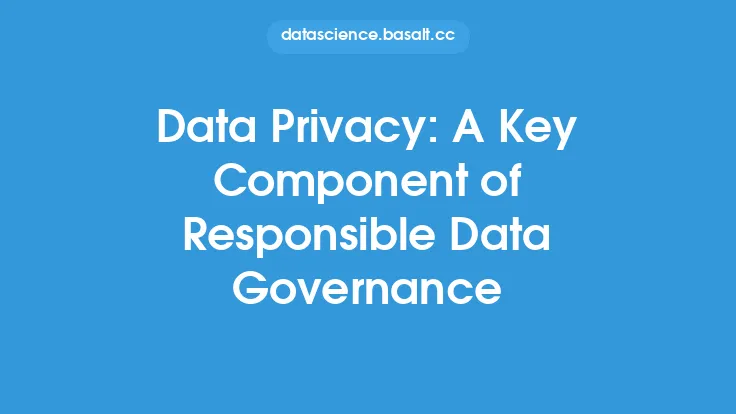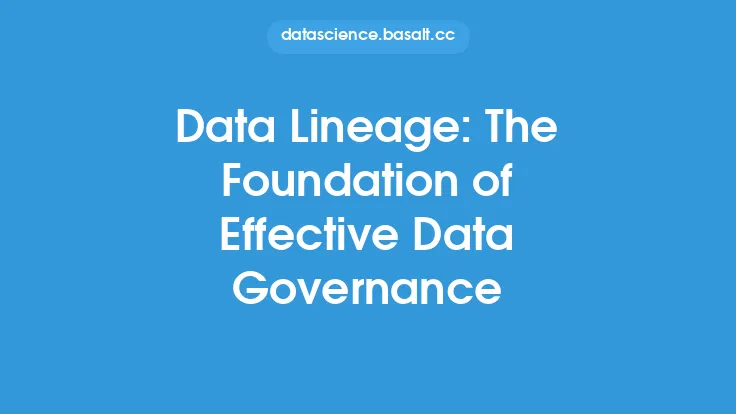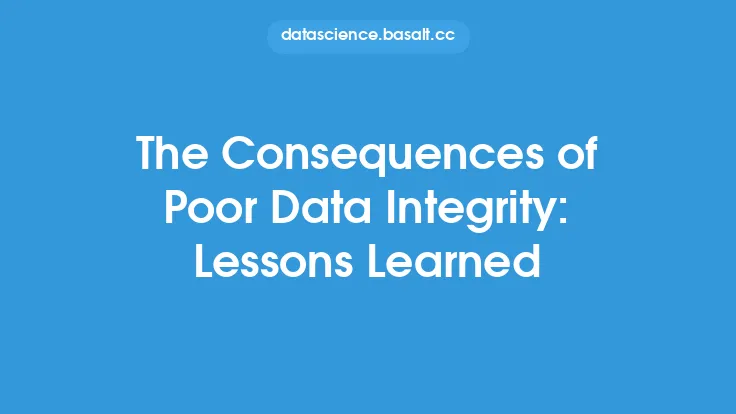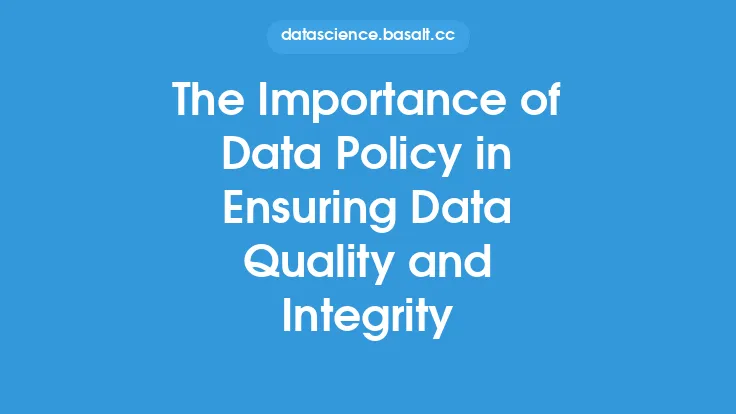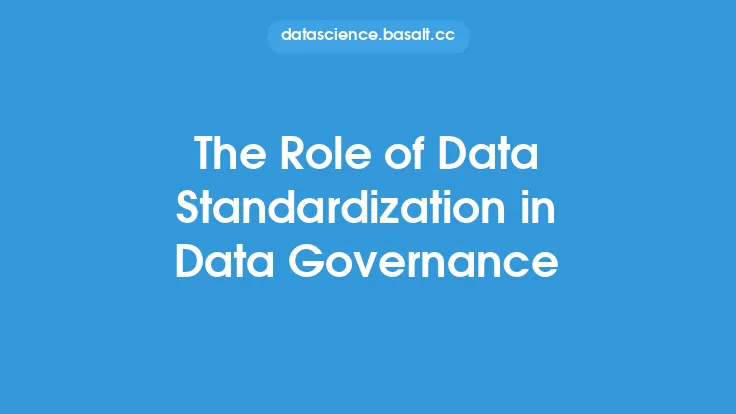Data integrity is a critical aspect of data governance, as it ensures that data is accurate, complete, and consistent throughout its entire lifecycle. It is the foundation upon which all other data governance activities are built, and its importance cannot be overstated. In today's data-driven world, organizations rely on high-quality data to make informed decisions, drive business outcomes, and maintain a competitive edge. However, data integrity issues can have far-reaching consequences, including compromised decision-making, reputational damage, and financial losses.
What is Data Integrity?
Data integrity refers to the accuracy, completeness, and consistency of data, as well as its adherence to defined standards and rules. It encompasses a range of activities, including data validation, data cleansing, data normalization, and data transformation. Data integrity is not a one-time event, but rather an ongoing process that requires continuous monitoring and maintenance. It involves ensuring that data is handled correctly throughout its entire lifecycle, from creation to disposal, and that it is protected from unauthorized access, modification, or deletion.
Key Principles of Data Integrity
There are several key principles that underpin data integrity, including:
- Accuracy: Data must be accurate and free from errors, whether they are syntactic, semantic, or semantic-interpretive.
- Completeness: Data must be complete and comprehensive, with all required fields and attributes populated.
- Consistency: Data must be consistent in terms of format, structure, and content, both within and across datasets.
- Validity: Data must conform to defined rules and standards, including data types, formats, and ranges.
- Reliability: Data must be reliable and trustworthy, with a clear audit trail and provenance.
Data Integrity in the Data Lifecycle
Data integrity is critical throughout the data lifecycle, which includes the following stages:
- Data creation: Data is created through various sources, including user input, sensors, and external data feeds.
- Data processing: Data is processed and transformed into a usable format, which may involve data cleansing, data normalization, and data aggregation.
- Data storage: Data is stored in a database or data warehouse, where it is protected from unauthorized access and modification.
- Data retrieval: Data is retrieved and used for various purposes, including reporting, analytics, and decision-making.
- Data archiving: Data is archived and preserved for future use, which may involve data compression, data encryption, and data backup.
Benefits of Data Integrity
The benefits of data integrity are numerous and significant, including:
- Improved decision-making: High-quality data enables informed decision-making, which can drive business outcomes and improve competitiveness.
- Increased efficiency: Data integrity can automate many data-related tasks, freeing up resources for more strategic activities.
- Enhanced reputation: Organizations with high data integrity are seen as trustworthy and reliable, which can enhance their reputation and build customer loyalty.
- Reduced risk: Data integrity can mitigate the risk of data breaches, cyber attacks, and other security threats.
- Compliance: Data integrity can ensure compliance with regulatory requirements and industry standards, which can reduce the risk of fines and penalties.
Challenges to Data Integrity
Despite its importance, data integrity can be challenging to achieve, particularly in today's complex and dynamic data environments. Some common challenges include:
- Data volume and velocity: The sheer volume and velocity of data can make it difficult to ensure data integrity, particularly in real-time data environments.
- Data variety: The variety of data sources, formats, and structures can create data integrity challenges, particularly when integrating data from multiple sources.
- Data quality issues: Data quality issues, such as missing or duplicate data, can compromise data integrity and require significant resources to resolve.
- Lack of standards: The lack of standards and governance can create data integrity challenges, particularly in decentralized data environments.
- Insufficient resources: Insufficient resources, including budget, personnel, and technology, can limit an organization's ability to ensure data integrity.
Best Practices for Ensuring Data Integrity
To ensure data integrity, organizations should adopt the following best practices:
- Establish clear data governance policies: Clear policies and procedures can ensure that data is handled correctly throughout its entire lifecycle.
- Implement data validation and cleansing: Data validation and cleansing can ensure that data is accurate, complete, and consistent.
- Use data normalization and transformation: Data normalization and transformation can ensure that data is in a usable format and conforms to defined standards.
- Monitor data quality: Continuous monitoring of data quality can identify data integrity issues early, reducing the risk of downstream problems.
- Provide training and awareness: Training and awareness programs can ensure that personnel understand the importance of data integrity and their role in maintaining it.
Conclusion
Data integrity is a critical component of data governance, ensuring that data is accurate, complete, and consistent throughout its entire lifecycle. By understanding the key principles of data integrity, its importance in the data lifecycle, and the benefits and challenges associated with it, organizations can take steps to ensure high-quality data that drives business outcomes and maintains a competitive edge. By adopting best practices and establishing clear data governance policies, organizations can mitigate the risks associated with poor data integrity and ensure that their data is trustworthy, reliable, and actionable.
